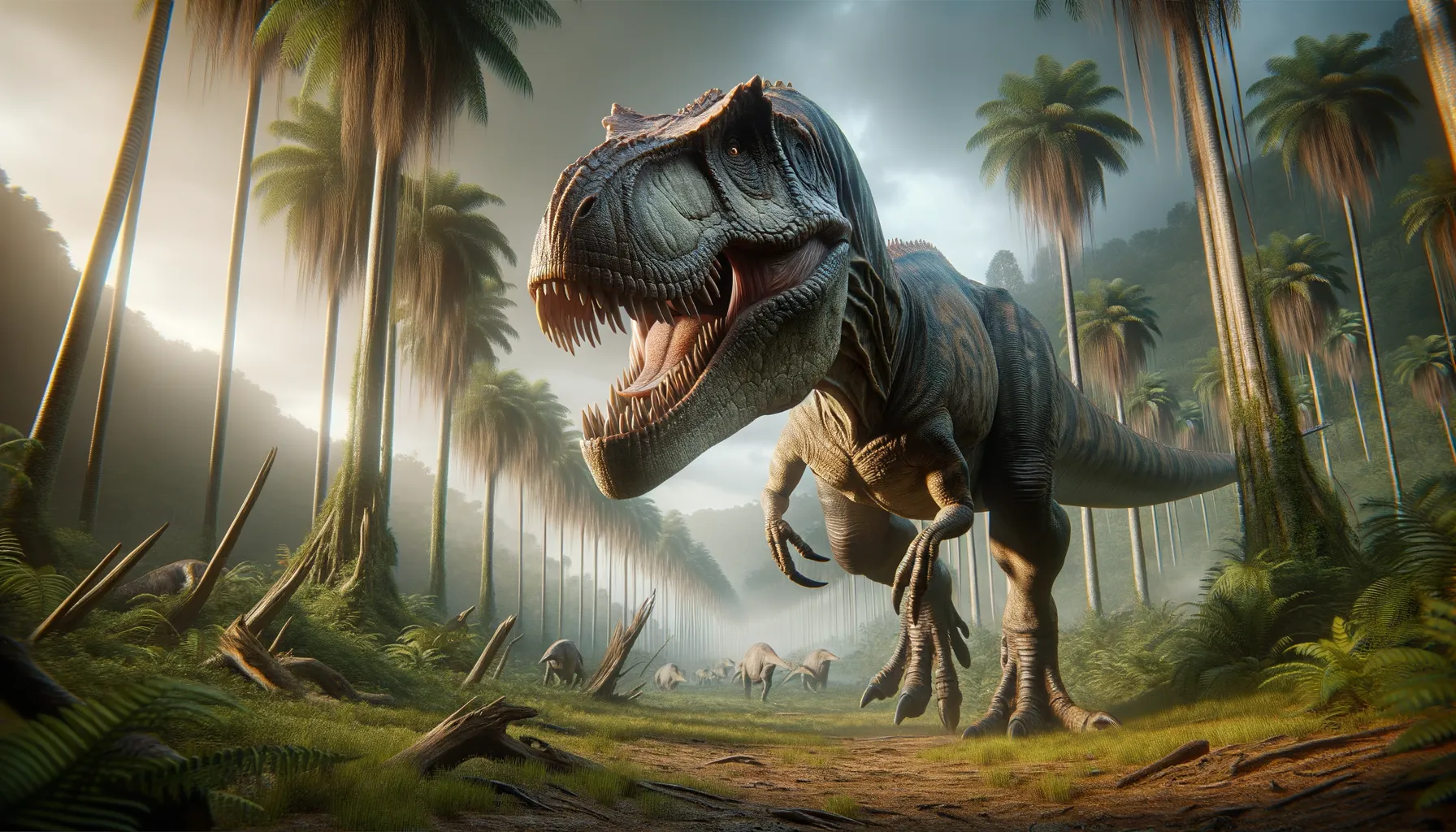
Pycnonemosaurus
Fierce predator of prehistoric Brazil
Period
Cretaceous
Length
About 8.9 meters long
Height
Roughly 3 meters at the hips
Weight
Approximately 2-3 tons
Pycnonemosaurus was a large theropod dinosaur that roamed the land that is now Brazil during the late Cretaceous period. Known primarily from partial remains, this carnivorous dinosaur was part of the Abelisauridae family. It likely had a robust build, sharp teeth, and was an efficient hunter. Current research continues to shed light on its ecology and behavior, expanding our understanding of ecosystems during this era.
Diet
Pycnonemosaurus was a carnivore, preying on smaller dinosaurs and other animals. It used its sharp teeth and strong jaws to capture and consume its food.
Hunting
This dinosaur likely hunted alone or in small packs, relying on ambush tactics. It may have used its strong legs for sudden, powerful bursts of speed to catch prey.
Environmental challenges
Living in the Cretaceous period's fluctuating climate posed challenges for Pycnonemosaurus, such as finding consistent food sources. Its environment included large predators and competition from other theropods. It's likely adapted to these challenges with its specialized hunting skills and physical adaptations.
Speed
Likely moderate, based on its size and build.
Lifespan
Estimated to be several decades, like other large theropods.
First discovery
Discovered in Brazil in 1999 by paleontologist William Nava.
Fun Facts
- Pycnonemosaurus was a meat-eating dinosaur that lived in what is now Brazil roughly 70 million years ago.
- Its name means 'thick forest lizard', which refers to the dense forests it likely inhabited.
- This dinosaur was a theropod, part of a group that also includes the famous Tyrannosaurus rex.
- It measured about 26 feet in length, making it one of the largest predators in its region.
- Fossils of Pycnonemosaurus are quite rare, with only fragmentary remains having been discovered so far.
- It is believed Pycnonemosaurus had sharp teeth and strong jaws, perfect for hunting and eating large prey.
- The discovery of Pycnonemosaurus has helped scientists understand more about the diversity of carnivorous dinosaurs in South America.
Growth and Development
Pycnonemosaurus grew rapidly, like other theropods, reaching a large size to deter predators. Juveniles may have been more vulnerable, relying on their speed and agility. Over time, they developed stronger muscles and a robust skeletal structure.
Habitat
This dinosaur inhabited the semi-arid regions of ancient South America, characterized by open spaces and sparse vegetation. It adapted well to the environment, with plenty of space to hunt and roam. Seasonal changes would have required adaptability in its food-seeking strategies.
Interaction with other species
Pycnonemosaurus interacted with a variety of species, including potential prey and other predators. It likely competed with smaller theropods and scavengers for food. Social interactions might have been limited to mating and occasional group hunting for efficiency.
Natural lifespan
Its natural lifespan was likely several decades.
Reproduction
Reproduction likely involved egg-laying, with nesting sites chosen for security. Little is known about its mating rituals, but like many dinosaurs, parental care may have been limited after laying eggs.
Social behaviour
Its social behavior may have included basic pack dynamics during hunting. Territorial disputes with rivals were likely, as were solitary traits typical of large carnivores.
Fossil locations
Fossils of Pycnonemosaurus have been found exclusively in Brazil. The discovery of its remains helped to map its habitat range. These fossils provide valuable insights into the ecosystem of the region during the Cretaceous period.
